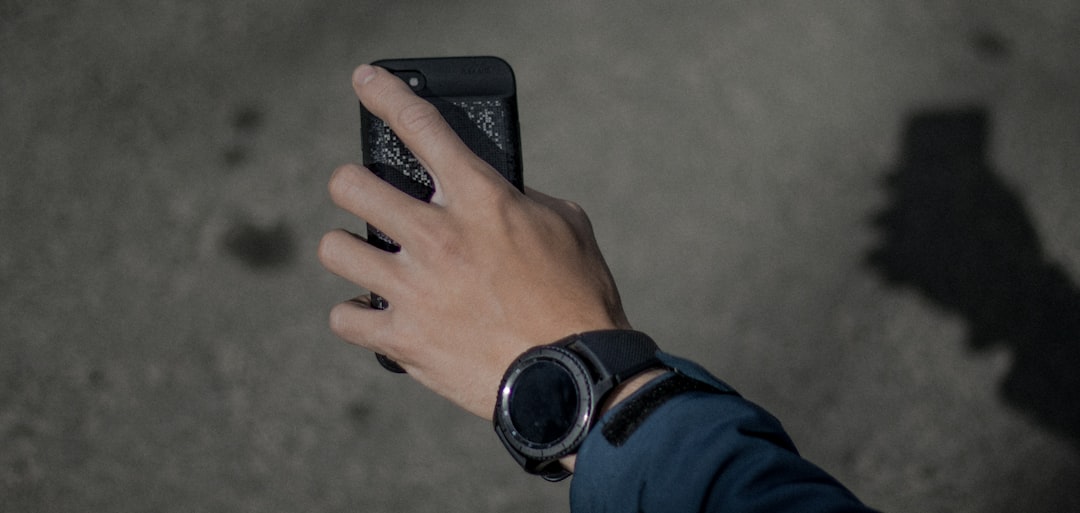
The Android Smartwatch Revolution: Your Phone’s Ultimate Companion
The Android Smartwatch Revolution: More Than Just a Second Screen
For years, the conversation around smartwatches felt like a footnote in the larger story of mobile technology. They were often dismissed as expensive novelties, glorified notification buzzers tethered to the real star of the show: your smartphone. But in the world of Android, a quiet revolution has been brewing. Fueled by strategic partnerships, powerful new hardware, and a renewed focus on health and utility, the Android smartwatch has finally shed its awkward adolescent phase. It has evolved from a niche gadget into an indispensable companion, a powerful hub for health monitoring, and a seamless extension of your digital life. This isn’t just about checking messages on your wrist anymore; it’s about unlocking a new layer of convenience and insight that fundamentally changes how you interact with your technology.
This deep dive moves beyond the typical tech specs to explore the journey, the current landscape, and the practical magic of today’s Android wearables. We’ll unpack how these devices have become central to the latest Android News, why they are the most personal of all Android Gadgets, and how they create a symbiotic relationship that elevates the experience of using your Android Phone. Whether you’re a fitness fanatic, a productivity pro, or just someone looking to streamline your day, the modern Android smartwatch has something profound to offer.
From Clunky Curiosity to Polished Powerhouse: The Evolution of Wear OS
The journey of the Android smartwatch is a tale of perseverance and reinvention. Understanding this evolution is key to appreciating the sophisticated devices we have today. What started as a promising but flawed experiment has matured into a robust and competitive platform, thanks to critical shifts in strategy and technology.
The Early Days: Android Wear’s Awkward Adolescence
Cast your mind back to the first generation of Android Wear devices. Watches like the original Moto 360 captured our imagination with their round displays—a novelty at the time—but were plagued by compromises. The infamous “flat tire” at the bottom of the screen, sluggish performance, and abysmal battery life that barely lasted a workday were common complaints. The software felt like a shrunken-down version of a phone OS, not something purpose-built for a tiny screen. It was a fascinating glimpse into the future, but for most users, it was an experiment that came with too much friction. The ecosystem was fragmented, and Google’s software updates, while well-intentioned, couldn’t fully overcome the limitations of the underlying hardware and a lack of focused vision.
The Renaissance: How the Google-Samsung Partnership Changed Everything
The most significant turning point in recent Android wearable history—a piece of Android News that reshaped the market—was the announcement of a unified platform partnership between Google and Samsung in 2021. This collaboration merged the best of Google’s Wear OS with Samsung’s Tizen OS, which had long been praised for its performance and battery efficiency on Galaxy Watches. The result was Wear OS 3. This wasn’t just a software update; it was a fundamental reboot. It brought a massive performance uplift, a more intuitive user interface with fluid animations, and access to a revitalized Google Play Store. For the first time, developers had a cohesive, powerful platform to build for, and users reaped the benefits with watches like the Samsung Galaxy Watch 4, which set a new standard for what an Android smartwatch could be.

The Pixel Watch Era: Google’s Vision Made Real
With a solid software foundation in place, the final piece of the puzzle was Google’s own hardware. The arrival of the Google Pixel Watch marked the company’s full entry into the wearables space. More than just another watch, the Pixel Watch represents Google’s “ideal” vision for a wearable. It combines a sleek, minimalist design with the “pure” Wear OS experience, free from third-party skins. Its killer feature, however, is the deep and seamless integration of Fitbit’s industry-leading health and fitness tracking. This move brought Fitbit’s trusted algorithms for sleep tracking, activity zones, and workout detection directly into the Wear OS ecosystem, creating a device that is as much a premium wellness tracker as it is a smart assistant. It’s designed to be the perfect companion for Google’s Pixel line of Android Phones, creating a tightly integrated hardware and software ecosystem.
Decoding the Modern Android Smartwatch: Your Life, On Your Wrist
Today’s Android smartwatch is a multi-faceted tool that extends far beyond telling time and showing notifications. It’s a proactive health monitor, a convenient payment device, a navigator, and a remote control for your digital world. Let’s break down the core pillars of the modern wearable experience.
The Proactive Health and Fitness Hub
This is arguably the most transformative aspect of modern wearables. These devices are packed with advanced sensors that provide a continuous stream of data about your body.
- Heart Rate and ECG: Continuous heart rate monitoring can alert you to unusually high or low resting rates. The electrocardiogram (ECG) sensor, found on premium models like the Galaxy Watch 6 and Pixel Watch 2, can check for signs of Atrial Fibrillation (AFib), a common form of irregular heart rhythm. A real-world scenario: you receive a notification for an irregular rhythm while watching TV, prompting you to share the ECG reading with your doctor for a professional opinion.
- Blood Oxygen (SpO2): This sensor measures the oxygen saturation in your blood, which can be a key indicator of respiratory health. It’s particularly useful for tracking how your body acclimates to high altitudes or monitoring potential issues during sleep.
- Skin Temperature: By tracking nightly variations in your skin temperature, watches can provide deeper insights into your sleep cycles, recovery, and even help with menstrual cycle tracking by predicting ovulation windows.
- Advanced Sleep Tracking: Modern watches don’t just track how long you sleep; they break it down into stages (Light, Deep, REM) and provide a sleep score. This actionable data can help you understand how factors like late-night meals or exercise impact your rest quality.
The Seamless Extension of Your Android Phone
The true magic of a smartwatch lies in its synergy with your phone. It intelligently filters your digital life, bringing what’s most important to a glanceable, accessible surface.
- Intelligent Notifications: Instead of pulling out your phone for every buzz, you can triage notifications from your wrist. A quick glance tells you if it’s an urgent work email, a text from a loved one, or just a social media update you can ignore. You can often send quick replies using your voice or pre-set responses.
- Wrist-Based Payments and Navigation: Imagine breezing through the checkout line at a coffee shop, paying with a simple tap of your wrist via Google Wallet. Or navigating a new city on foot, following turn-by-turn directions on your watch without having to constantly hold your phone. These small conveniences add up to a significantly smoother daily experience.
- Calls and Media Control: Taking a quick call on your watch while your hands are full is a game-changer. Similarly, being able to skip a track, pause a podcast, or adjust the volume of music playing on your phone or earbuds directly from your wrist is incredibly convenient during a workout or commute.
Choosing Your Champion: A Guide to the Android Wearable Landscape
The market for Android Gadgets is diverse, and smartwatches are no exception. Choosing the right one depends on your priorities, the phone you use, and your personal style. Here’s a breakdown of the key players.
The Main Event: Samsung Galaxy Watch vs. Google Pixel Watch

This is the central rivalry in the Wear OS world, much like Samsung vs. Google in the phone space.
- Samsung Galaxy Watch Series (e.g., Watch 6/Classic): Samsung’s offerings are the feature-packed all-rounders.
Strengths: They come in multiple sizes and styles, including the “Classic” model with its fan-favorite physical rotating bezel for navigating menus. They boast bright, crisp displays, a comprehensive suite of Samsung Health features (including body composition analysis), and robust hardware.
Best For: Samsung phone users (to unlock all features like ECG), those who want hardware variety and a more traditional “watch-like” design, and users who appreciate the tactile control of the rotating bezel. - Google Pixel Watch Series (e.g., Watch 2): Google’s watch is the elegant minimalist with a focus on software and health intelligence.
Strengths: It features a beautiful, domed glass design that’s sleek and comfortable. Its main draw is the best-in-class Fitbit integration, offering superior sleep tracking, activity goal metrics, and a more user-friendly fitness interface. It also delivers the “purest” Wear OS software experience.
Best For: Pixel phone users, fitness enthusiasts who are already invested in or attracted to the Fitbit ecosystem, and those who prioritize a clean, minimalist aesthetic and software experience.
The Specialists and Alternatives
Beyond the big two, other brands offer compelling options that cater to different needs.
- Mobvoi TicWatch: Often seen as a value-oriented innovator, Mobvoi has long been a player in the Wear OS space. Their flagship models, like the TicWatch Pro series, are known for a unique dual-display technology that layers a low-power screen over the main OLED display, allowing for dramatically extended battery life in “Essential Mode.”
- Fossil Group (Fossil, Skagen, Michael Kors): If style is your top priority, the Fossil Group is your destination. They specialize in creating smartwatches that look and feel like traditional, fashionable timepieces. They offer a huge variety of case sizes, colors, and strap options, proving that tech can also be a style statement.
Pro Tips and Best Practices: Mastering Your Android Wearable
Owning a powerful gadget is one thing; getting the most out of it is another. Here are some actionable tips and common pitfalls to help you master your Android smartwatch.
Mastering the Battery Life Challenge

The number one concern for most smartwatch users is battery life. While you won’t get weeks of use from a full-featured Wear OS device, you can easily get through a full day and night with these tips:
- Disable the Always-On Display: It’s beautiful, but it’s also a major battery drain. Relying on the “tilt-to-wake” feature is far more efficient.
- Use Bedtime/Theater Mode: When you’re sleeping or at the movies, enable this mode. It turns off the screen and notifications, saving significant power overnight.
- Manage Connectivity: Your watch doesn’t need Wi-Fi enabled if it’s already connected to your phone via Bluetooth. Turn it off in the settings to save power.
- Choose a Smart Watch Face: A simple, dark watch face with fewer active complications (widgets) will use less power than a bright, animated one that’s constantly pulling data.
Customization is King
Make your watch truly yours by tailoring it to your workflow.
- Curate Your Tiles: Tiles are the quick-access screens you see when you swipe left or right from your watch face. Customize them to put your most-used information—like the weather, your next calendar event, or your fitness stats—just a swipe away.
- Program Your Buttons: Most Wear OS watches allow you to customize the long-press function of the physical buttons. Set one to instantly launch Google Wallet or start your favorite type of workout for ultimate convenience.
- Explore Third-Party Watch Faces: The Google Play Store is filled with apps like Facer that offer thousands of watch faces, allowing you to change your watch’s look to match your outfit, mood, or needs.
Common Pitfalls to Avoid
- The iPhone Trap: A Wear OS smartwatch is designed for Android Phones. While some may have basic connectivity with an iPhone, the experience is severely limited. If you use an iPhone, an Apple Watch is the far better choice.
- Ignoring Updates: Manufacturers and Google regularly push out updates that include new features, bug fixes, and crucial security patches. Make sure you keep both the watch’s OS and the companion app on your phone up to date.
- Unrealistic Expectations: Understand the trade-offs. A device with a vibrant OLED screen, GPS, continuous heart-rate monitoring, and a full app store will need to be charged daily or every other day. It is not a “charge it once a week” fitness band.
Conclusion: The Future is on Your Wrist
The Android smartwatch has finally come of age. It has successfully transitioned from a tech curiosity into a mature, powerful, and deeply personal category of Android Gadgets. No longer just a passive screen for notifications, it is an active partner in managing your health, a convenient tool for navigating your day, and a stylish expression of your connection to the digital world. The tight integration between Wear OS, industry-leading health platforms like Fitbit, and the power of your Android Phone has created an ecosystem that is compelling, useful, and genuinely delightful to use. As sensor technology becomes even more advanced and AI integration gets smarter, the watch on your wrist is poised to become an even more indispensable part of our connected lives, offering insights and convenience we’re only just beginning to imagine.



